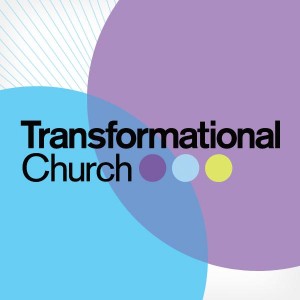Below is a video interview with two members of Living Hope Fellowship, the GCI congregation in Champlin, Minnesota. They discuss what their congregation is doing to reach out to a particular focus group in their community.
Category: Church Development
Church planting network
Linked below is a video that excerpts comments from GCI pastors in a district meeting in Minnesota. The discussion centers on what their district, led by district pastor Doug Johannsen, is doing to partner together as congregations to plant some new churches in their district, and thus leave a legacy that will stretch into future generations.
A challenge to churches
 In a recent post on his …in the meantime blog, David Lose asks, “Will churches go the way of bookstores?” In answering, he notes that rapid and sweeping changes in technology and other factors have led to the demise of many bookstores. He then wonders if something similar is happening to churches that do not adapt. He challenges churches to consider ways to be more effective in reaching out to a culture that is rapidly changing.
In a recent post on his …in the meantime blog, David Lose asks, “Will churches go the way of bookstores?” In answering, he notes that rapid and sweeping changes in technology and other factors have led to the demise of many bookstores. He then wonders if something similar is happening to churches that do not adapt. He challenges churches to consider ways to be more effective in reaching out to a culture that is rapidly changing.
Read the blog post at http://www.davidlose.net/2012/06/churches-and-bookstores/, and consider its implications as we in GCI fulfill our mission to live and share the gospel, in pursuit of our vision for new kinds of churches, for all kinds of people, in all kinds of places.
Core leadership skills
 The cartoon at right reminds us that leading a church or ministry is no easy task. Certainly there is no one-size-fits-all formula for success. However there are important principles and skills. The principles are addressed in chapter four of the GCI Church Administration Manual. A recent churchleaders.com article highlights three essential skills:
The cartoon at right reminds us that leading a church or ministry is no easy task. Certainly there is no one-size-fits-all formula for success. However there are important principles and skills. The principles are addressed in chapter four of the GCI Church Administration Manual. A recent churchleaders.com article highlights three essential skills:
- Casting Vision
- Executing Strategy
- Fostering Relationships
To learn more, read the article at http://www.churchleaders.com/pastors/pastor-how-to/161005-alan_danielson_dont_neglect_these_3_core_leadership_skills.html?print.
Tell good stories
The Evangelical Council for Financial Accountability (ECFA) recently launched The Good Story Project. Its purpose is to tell stories of the Kingdom work being accomplished by nonprofits. In soliciting these stories, ECFA gives three necessary pieces of a compelling story. They provide a good outline to use when we tell our stories in sermons, Bible studies, articles, etc.
- “Look what God did!” We are primarily trying to convey what God has been doing in lives, through faithfulness to his calling. A good story is about what happens when God meets an individual in a life-changing way.
- Scripture foundation. Being disciple-makers is our calling. A good story is consistent with what God said in Scripture. The story is about his agenda, not ours.
- “So what?” The purpose for telling a story is to call God’s people to fulfill the Great Commission. A good story reflects the difference it makes when an individual gets involved in God’s work.
Let’s tell our stories!
Young people & digital media
 Parents and churches are challenged to adapt to the communication styles and technologies of young people who rely heavily on digital media. The following related information is from a recent issue of the Mission America newsletter.
Parents and churches are challenged to adapt to the communication styles and technologies of young people who rely heavily on digital media. The following related information is from a recent issue of the Mission America newsletter.
Future of the Internet
A new Pew Research survey about the future of the Internet finds many young people are growing up hyper-connected to each other and the mobile Web. They are counting on the Internet as their external brain to be nimble, making them quick-acting multitaskers who will do well in key respects. However, many analysts argue it is a myth that Millennials have a special aptitude for digital media because they’ve grown up digital. Good research has shown that even especially bright kids are less productive when multitasking, a finding resisted by plenty of grown-ups as well. The immersive nature of 24/7 connectedness creates the illusion that Millennials can somehow tap into a form of collective intelligence just by being online while looking impatiently for messages every 3 minutes. (Center for Media Research Brief 3/14/12)
Digital Natives
Consumers in their 20s switch media venues about 27 times per nonworking hour – the equivalent of more than 13 times during a standard half-hour TV show according to a recent Time Inc. study by Innerscope Research. In contrast, digital immigrants (consumers who grew up with TV, radio and print and adapted to new technologies) switched media venues just 17 times per nonworking hour. Put another way, natives switch about 35% more than immigrants. (Advertising Age 4/9/12)
Social Networkers
There are now 146 million “Social Networkers” in the U.S. – adults age 18 and older who have used a social networking site at least once in the last month. 36% use it to stay in touch, 25% for entertainment, 20% for information, 15% for self expression and 4% for dating. (Center for Media Research Brief 4/16/12)
Texting Teens
63% of U.S. teens were text-messaging daily as of 7/11, up from 54% in 9/09. The volume of texting has also grown from 50 messages a day to 60 for the typical teen. Much of that increase is among older teens (14-17) ramping up from a median of 60 texts in 2009 to 100 last year. The daily exchange of texts among almost two-thirds of teens far surpasses other types of daily communication, including calling by cell phone (39%), face-to-face socializing outside of school (35%), social network messaging (29%), instant messaging (22%), talking via landline (19%), and emailing (6%). (Pew Research Center’s Internet & American Life Project 3/12)
Connected Kids
An estimated 15% of children under 11 own a mobile phone, and that number is expected to grow to 22% by 2015. (Adweek 3/26/12)
Brain Rules for meetings
 Molecular biologist John Medina is author of the best-selling book Brain Rules: 12 Principles for Surviving and Thriving at Work, Home, and School.
Molecular biologist John Medina is author of the best-selling book Brain Rules: 12 Principles for Surviving and Thriving at Work, Home, and School.
Medina offers insights concerning how to make presentations that work with, rather than against, how our brains are “wired.” His insights are relevant to giving sermons, Bible Studies, seminar presentations and the like.
For an interview with Medina that summarizes the key points of his book, go to http://brainrules.blogspot.com/2012/01/brain-rules-for-meetings.html?utm_source=feedburner&utm_medium=feed&utm_campaign=Feed%3A+BrainRules+%28Brain+Rules%29
Community outreach
GCI’s congregation in Tipp City, OH (CrossRoads Christian Fellowship) had a key role in the recent Tipp City Area United Way Day of Caring. The event centered on the work of volunteers who completed six projects to improve the community, including sprucing up flower beds and picking up trash in city parks and cleaning up around the high school.
Jim Valekis, CrossRoads’ senior pastor and a member of the local United Way board, helped coordinate and promote Day of Caring. Jim noted that its purpose was to “get as many churches, organizations and groups as possible to come together to unleash shared care into the community… Caring breeds caring; people from across the age spectrum and all over the community worked together to bring about good.”
For a video featuring Jim promoting Day of Caring, see http://kittv.pegcentral.com/player.php?video=cf76428a4de2f0abcde28ff27316cf19.
Marriage ministry
Current cultural trends and legal changes in marriage, families, relationships and sexual behavior raise new questions and challenges in pastoral ministry. The National Association of Evangelicals recently published a position paper that addresses this topic. Here is an excerpt:
As evangelical Protestant pastors who are committed to the Bible as our rule of faith and practice, we seek guidance in dealing with these challenges. The following list of principles is to build a framework for making decisions in pastoral ministry.
You can read the full letter at www.nae.net/images/content/Pastoral_Letter_on_Marriage_Relationships_Ministry_04-17-12.pdf
Transformational Church
This update is from Stuart Mahan, senior pastor of the GCI congregation in Toledo, OH.
 I was blessed last year in February to become the pastor of Grace Family Fellowship, the GCI congregation in Toledo, OH. My story is somewhat unique, in that I had been a bricklayer for 23 years with “on the job training” as the congregation’s youth ministry leader. Recently I was selected to become the new senior pastor following the retirement of our pastor, Larry Brown.
I was blessed last year in February to become the pastor of Grace Family Fellowship, the GCI congregation in Toledo, OH. My story is somewhat unique, in that I had been a bricklayer for 23 years with “on the job training” as the congregation’s youth ministry leader. Recently I was selected to become the new senior pastor following the retirement of our pastor, Larry Brown.
As part of the process of being hired as the new senior pastor, I was given a pastoral assessment by Church Administration and Development (CAD). Based on the assessment, CAD recommended that I lead our congregation in utilizing CAD’s Transformational Church consulting services. I was unsure what this was but signed us up. The initial step was to lead the congregation through a Transformational Church Assessment, using an online survey instrument that has about 80 questions pertaining to all aspects of our local church (worship, leadership, community involvement and other vital areas of church life).
Following completion of the survey, we held a Discovery Retreat. This all-day event was facilitated by our Transformational Church consultant, who in our case was Ted Johnston from CAD. Ted helped us unpack all the information gathered in the survey. Following the retreat, Ted took what we had learned together in the assessment and retreat and prepared an Action Plan for our congregation. This plan is proving invaluable for me as a new pastor. It summarizes what we learned about our strengths and weaknesses and offers guidance as to the direction we need to be moving as a congregation.
Pastors are to be leaders, helping the congregation see where God is working and encouraging them to join him there. But this can be difficult to do when even the pastor is unsure as to what direction the church needs to be moving. The Action Plan has become a blueprint for building the future of our congregation. After spending 23 years in the construction trades, this approach fits me perfectly. As an inexperienced pastor, I now know what I need to focus on and in what direction to proceed.
As a result of the Transformational Church process, we now have in place a new Mission/Vision Statement. We also have a new leadership team and advisory team in operation. All are aware of where we want to go and what our mission in Toledo is. The feeling of confidence and direction has been encouraging not only to the leadership, but to the whole congregation as well. There is a sense of purpose in everything we do. We have goals and know what we are aiming for.
We may not have all the answers, but then God does not always give the complete lay of the land. That is where the adventure comes into play, and having the faith and knowledge that it is God’s work, not ours.
I would encourage any pastor who may feel the need for an updated “blueprint” to check into CAD’s Transformational Church consulting services It was one of the wisest instructions given to me, and I am thankful for it.
To learn more about CAD’s Transformational Church consulting services, go to http://mindev.gci.org/services.htm (look in the right-hand column), or telephone the CAD office.


